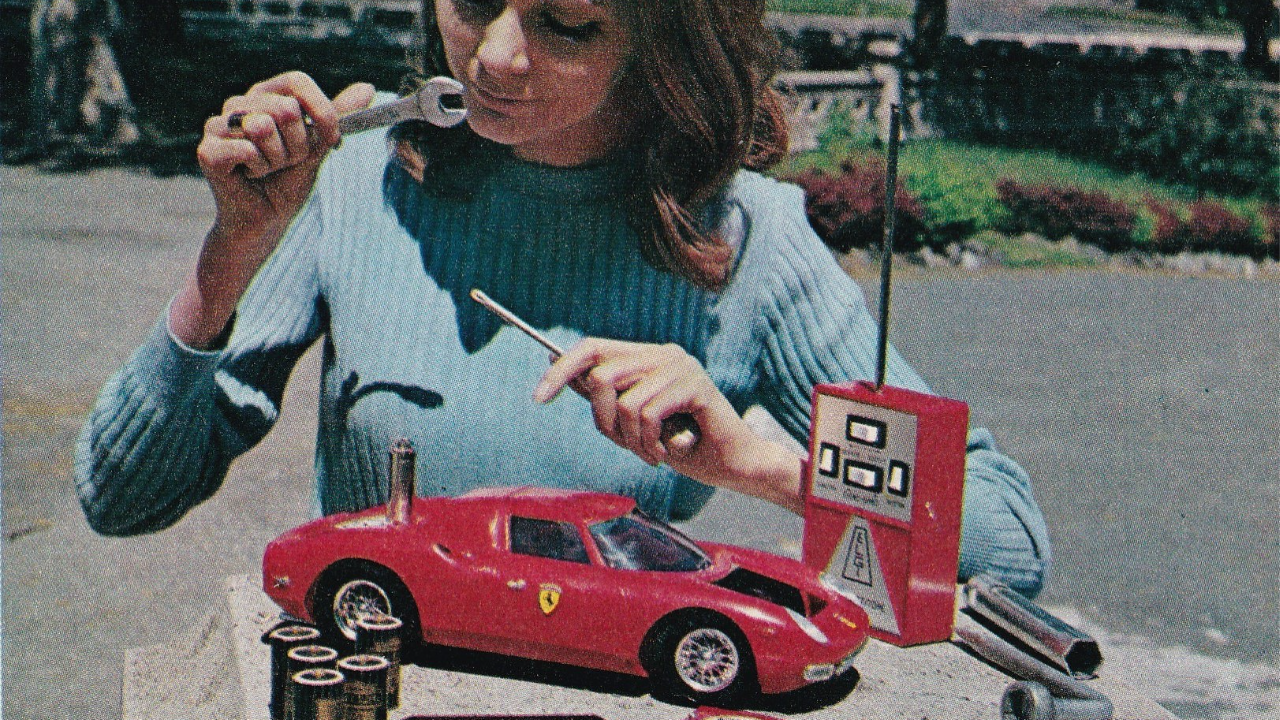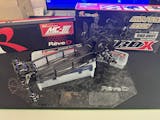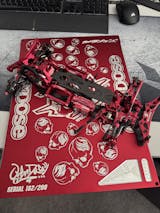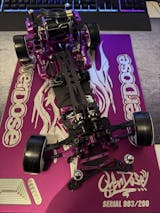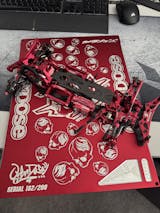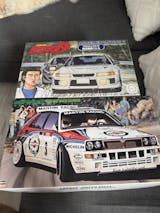Remote-controlled (RC) cars have captured the hearts of enthusiasts and casual hobbyists alike for decades. These miniature speed machines have come a long way since their inception, evolving through technological advancements and cultural shifts. Let's take a journey through the fascinating history of RC cars, exploring their origins, advancements, and the community that surrounds them.
The Dawn of RC Cars: 1940s Innovation
The journey of remote-controlled vehicles began in the 1940s, a decade marked by major advancements in radio technology driven by wartime needs. This period saw the emergence of two key players in the RC car field: Dooling Bros and Ohlsson & Rice.
Dooling Bros, founded by the Dooling brothers, pioneered the development of model engines that were largely used in RC applications. Their emphasis on performance and engineering set the stage for the burgeoning hobby of radio control. At the same time, Ohlsson & Rice became known for their high-performance model engines for both cars and airplanes. Their lightweight engines offered speed and reliability—essential qualities that would shape the future of RC vehicles.
These early innovations laid the groundwork for what would soon explode into a popular pastime. The introduction of robust engines and radio systems began to change the landscape of model crafting, enabling hobbyists to control their miniature vehicles from a distance, paving the way for the RC car revolution.

The 1950s: Ford Motor Company’s Design Competition
The 1950s marked an era of significant innovation not just in the automotive industry but in the model car market as well. In a surprising twist, Ford Motor Company hosted a design competition that spurred interest in scale models, including RC vehicles. The Ford contest encouraged designers and engineers to conceptualize futuristic automotive designs, many of which incorporated elements of remote control into their models.
This competition not only showcased emerging talent but also bolstered public interest in model cars, as more people began to see these miniature replicas not just as toys, but as viable engineering projects. The designs produced during this period influenced the aesthetics and functionality of RC cars, leading to more precise engineering as model enthusiasts sought to replicate the vehicles they admired in full scale.
The Birth of RC Cars: The 1960s

With the foundational work laid in the previous decades, the 1960s brought about an exhilarating new chapter in the RC car realm with the arrival of Elettronica Giocattoli, an Italian toy manufacturer. They introduced the ElGi Ferrari 250LM, a fully functional remote-controlled car that captured the essence of its full-scale counterpart. This wasn’t just a toy; it was a leap forward in terms of both design and technology.


The ElGi Ferrari 250LM featured a fully operational radio control system that allowed it to maneuver with remarkable agility and speed. It was among the first RC cars designed not only for hobbyists but also for the mass market, making the concept of remote-controlled vehicles accessible to a broader audience. The marriage of aesthetics and function in the ElGi Ferrari 250LM became a template for subsequent designs, proving that RC cars could be replicas of iconic automotive designs while also providing thrilling performance.

The Rise of the 1970s: First Generation RC Cars
The 1970s saw significant advancements in both technology and design. Companies like Tamiya and Associated Electrics entered the scene, playing pivotal roles in defining the RC car market. During this decade, the introduction of electric-powered cars revolutionized the hobby, providing a quieter and more accessible alternative to their gas-powered counterparts.

In 1974, Tamiya launched the "Sand Scorcher," a remarkable RC car lauded for its innovative design and performance. It quickly became a bestseller and is often considered a classic among collectors today. The popularity of 1/10 scale off-road vehicles surged, turning RC car racing into a competitive sport.
The 1980s: A Decade of Innovation
The 1980s ushered in an era of unprecedented innovation in RC technology. The introduction of the "proportional control" mechanism allowed hobbyists to control their vehicles with much finer accuracy. This advancement made RC racing more exciting and competitive, encouraging the proliferation of clubs and events.
During this time, manufacturers began offering kits that allowed enthusiasts to build and customize their vehicles from the ground up. This DIY spirit fueled creativity, leading to an explosion of custom designs and personal modifications. The RC car culture continued to thrive, with communities forming around events, competitions, and the sharing of knowledge.

The 1990s: The Digital Revolution
The 1990s marked a dramatic transformation for RC cars with the advent of digital technology. Introduced were programmable transmitters and receivers, which allowed for more intricate maneuvers and control settings. Brushless motors emerged, enhancing speed and reliability, while NiMH batteries became commonplace, providing longer run times and faster charging.
The decade also witnessed the rise of 2.4 GHz technology, eliminating the need for frequency crystals and enabling multiple vehicles to race simultaneously without interference. This was a game-changer for competitive racing, as events could accommodate more participants than ever.
The 2000s and Beyond: The Era of Diversity

As we entered the new millennium, the RC car scene blossomed into a multi-faceted hobby. Manufacturers began producing a diverse array of vehicles, catering to varying tastes—from on-road and off-road models to monster trucks and drones. Electric versus nitro propulsion debates became commonplace, with enthusiasts defending their preferences passionately.
With the rise of the internet, online forums and communities proliferated, allowing hobbyists to share resources, advice, and tips. Moreover, social media platforms provided a new avenue for enthusiasts to showcase their custom builds and racing achievements, leading to a new era of interconnectedness within the RC car community.
The birth of ready-to-run (RTR) models also made the hobby more accessible, allowing newcomers to venture into the world of RC cars without the steep learning curve associated with building custom models.
The Future: What's Next for RC Cars?

Today, RC cars continue to evolve, integrating cutting-edge technology such as smartphone controls, innovative suspension systems, and even artificial intelligence for enhanced driving experiences. The hobby has expanded to encompass not just cars but also planes, boats, and drones, catering to a broader audience.
As we look to the future, we can only imagine what advancements await—perhaps fully autonomous RC vehicles or even virtual reality racing experiences that blur the line between the digital and physical realms.
From their humble beginnings in the 1960s to the thrilling racing competitions and vast customization options of today, RC cars represent more than just a hobby; they are a community of passionate individuals united by a love for technology, innovation, and competition. Whether you’re a seasoned racer or a curious newcomer, there has never been a better time to join the exciting world of RC cars. Buckle up—it's going to be a thrilling ride!

